Cover by Emilie Guan
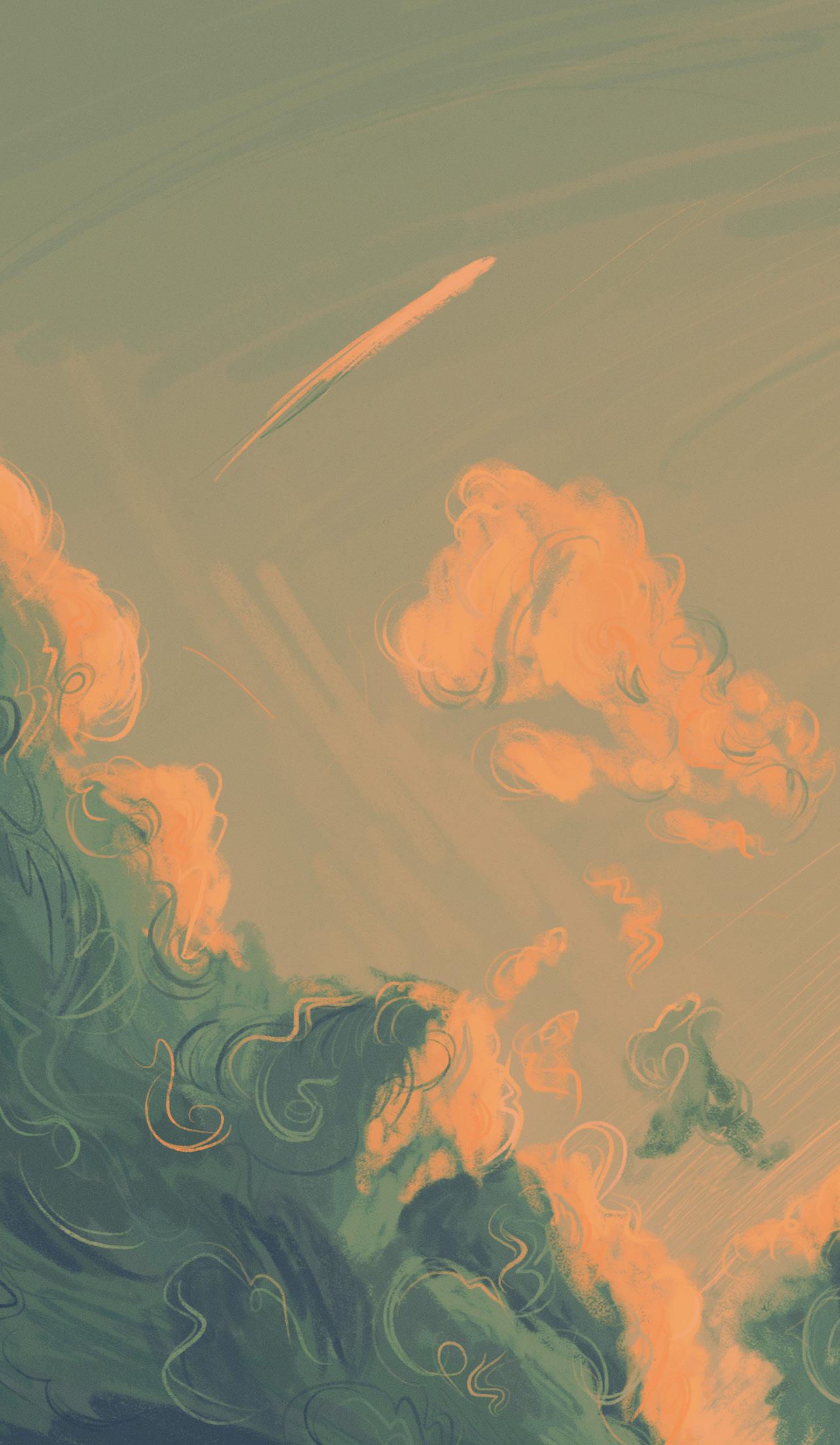

Cover by Emilie Guan

by Michelle Bi
Illustrated by Emilie Guan
If you’d asked my twelve-year-old self to close her eyes and go to her happy place, she would have done so dutifully: contemplated, ruminated, and then cast herself to the Burbank, California IKEA.
This location is the biggest in the United States, three sprawling stories replete with beds and cabinets and lamps, plus a restaurant that serves the best (and only) Swedish meatballs I’ve ever eaten. Every few months throughout my middle school years, my family would clear out a Sunday, make the hour-long drive down to Burbank, and spend the day perusing furniture. My favorite mug at home was lifted from a display shelf in the kitchen section. I know the multicolored surface of the dining table that my dad has been eyeing (and my mom has been vetoing) for years by heart. Even the cream throw blanket at the foot of my dorm bed was found in the market hall.
Mostly, though, I remember wandering through the showrooms for hours with my sister, each corner holding a new living space designed to perfection. Here, a cozy bed laden with pillows, bright white lights strung up along the walls. There, a mahogany apartment-style kitchen and dining room, the table already set, waiting for its guests.
I’d drape myself across sofas and chaises and imagine myself in a thousand different lives: a young and intrepid journalist in New York City; an accomplished biologist whose studies took her all over the world; an aunt, or a wife, or even a mother— beautiful and brilliant and brimming with fulfilled potential. I’d live in a perfect home, have the perfect job, settle down with the perfect person, show off a perfect body. As my teenage years began to roll by, my family returned to the storerooms again and again, mostly at my request. Anything felt possible in the Burbank IKEA.
Dear Readers,
Today I went to the ERC, one of my favorite places to work. I didn’t text anyone that I was going to be there, I didn’t check any of my friends’ locations, I just showed up. One of the biggest joys at Brown is being in such close proximity to the people I love—getting to run into them serendipitously. Walking into the Ratty as a sophomore and recognizing three tables of friends. Stopping a friend on the sidewalk to hear about their spring break. Catching a friend on a picnic blanket on the Main Green. The ERC is one of the absolute best places to maximize these run-ins. Today, as I sat with my laptop open at the ERC, I barely glanced at it, people watching instead, running into friends upon friends.
Our writers, too, are looking for meaning and order in serendipitous places. In Feature, Michelle explores our need for symmetry and order in our homes and bodies, in our
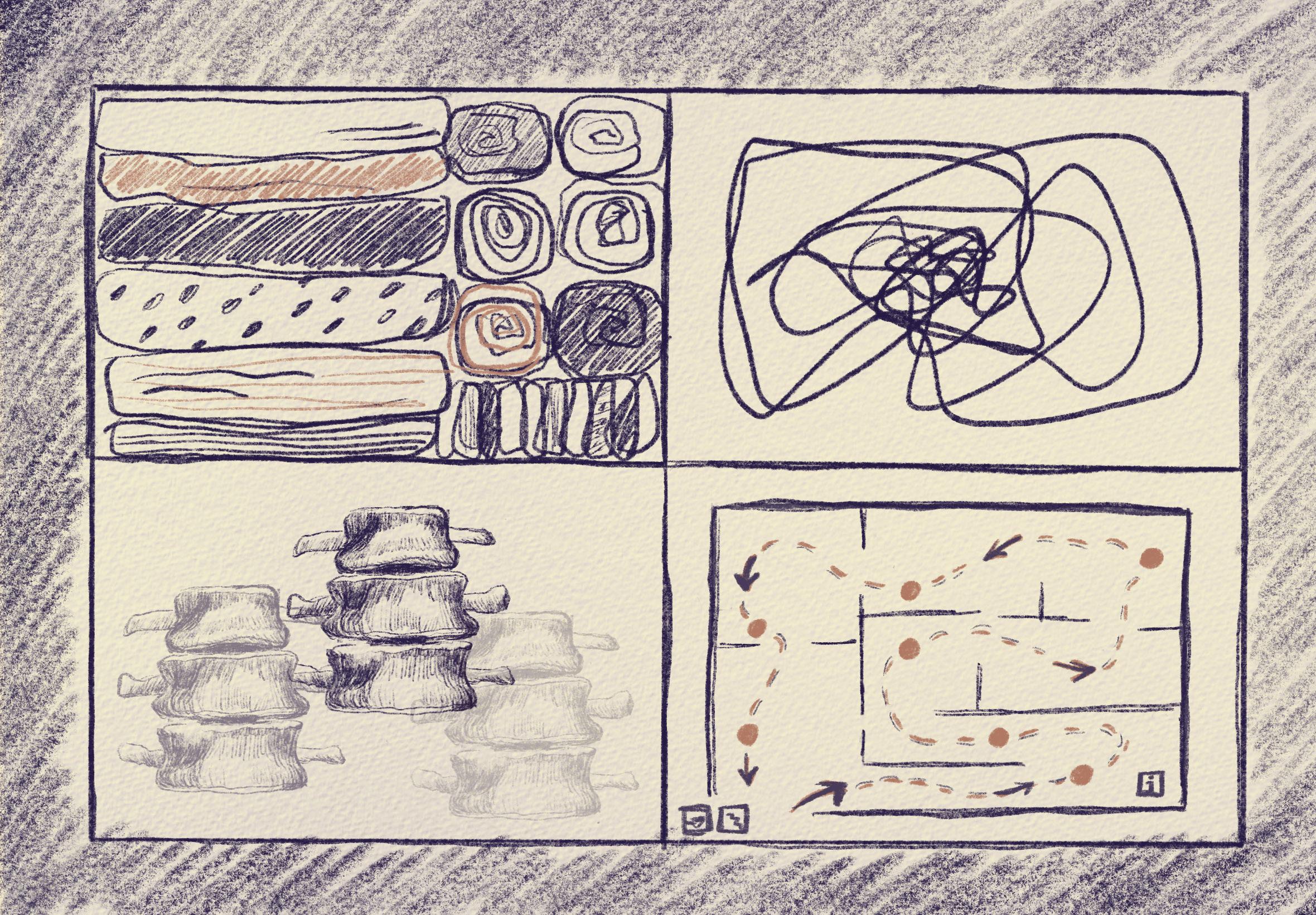
“Having your home look just the way you want is an amazing feeling that is well worth the effort. If it seems like far too daunting of a task to declutter your home in its entirety, just start with one room. You’ll still feel good and will be more motivated to keep going!”
- Homemakers, “7 Benefits of a Clean and Organized Home”
Over quarantine, my parents—like many others—began watching that one Netflix show about Marie Kondo and her meticulous approach to organization. The KonMari method instructs users to begin “tidying by category,” rather than by location. “Keep only those things that speak to the heart, and discard items that no longer spark joy,” reads the webpage. “Thank them for their service— then let them go.”
Trapped at home, my parents took on this task in earnest. My father went diving into the depths of their shared closet, unearthing floral-printed dresses and pinstriped shirts galore, then packing them all into brown bags and sending them off to the donation center. My mother spent days sorting through every bookshelf in the house, handing off all the children’s books to family friends and reshelving the rest. Under our parents’ watchful eyes, my sister and I also took to cleaning our rooms, folding all our clothes and decluttering the floors and complaining all the while.
By the end of our spree, things felt different. Lighter. There was newfound space on the shelves
lives. In Narrative, Nina reflects on the natural order of the food chain and life cycle, a reckoning brought on by the loss of her cat. In A&C, Ozzy reassures the main character of the movie *Dìdi* that things do get better, despite the difficulties of being 13. Ellie, too, is searching for meaning and order, looking toward Japanese principles for building a contented life. In Lifestyle, Gabi reflects on restlessness and not being able to drift as easily toward sleep as she once could. In postpourri, Rchin ponders where creativity lives in the face of AI art. Finally, don’t forget Lily’s basketball-themed crossword, you may shoot a 3-pointer!
The serendipity I find at the ERC is how I feel about post- too: getting to open the prod sheet and recognizing our writers’ and illustrators’ names, knowing this week will have a sentimental piece by Katherine or a colorful collage by Angelina. In the face of graduating, I can already feel the familiarity fading. The odds are good that if I walk into the ERC a year from now, I won’t recognize anyone. The tables of laughing, barely-working underclassmen won’t include
and room to fit board games into the closet. But the more I looked around, the less I really felt at home. Everything was in its proper place, and yet I couldn’t find anything—everything was positioned just so, but it all felt off.
The Kondo method is one of many, many more organizational philosophies. Döstädning, author Margareta Magnusson’s “Swedish death cleaning,” calls for people to get rid of excess possessions so that their loved ones won’t have to do so after their passing. The “four-box method” instructs people to sort their belongings into four categories: keep, store, donate, and discard. And in the “30-day minimalism game,” players must get rid of one item the first day, two on the second day, and so forth. My family has tried several of these methods, but none have ever truly stuck. Our household seems to hum with a permanent tone of entropy, where the shoes must constantly be scattered across the floor and the jackets are thrown at random atop the couch. Sometimes I wonder what we crave more: the order, or the act of pursuing the order. The picture-perfect home, or just becoming marginally more perfect by being there yourself.
“A place for everything and everything in its place.”
- Seventeenth century idiom
Late in elementary school, I was diagnosed with idiopathic scoliosis. At the young age of nine, this was not something I understood. The increasing curvature of a backbone, the gradual
a seat pulled up for me. Some Wednesday night soon, I’ll refresh the post- website to a sea of articles by unfamiliar authors, not knowing who favors an em dash and which author prefers semicolons. I know one day, the distance will hurt, but now, I’m so grateful for the magic of these spaces— the ERC, the cramped office at 88 Benevolent Street, the Main Green—that I just feel lucky to be one of the names and faces who has cycled through. With a few weeks left in the semester, I’m feeling generous enough to be so excited for the next set of people who get to sip on a vanilla matcha, who get to laugh themselves silly over a top 10.
future
degradation of the body’s natural symmetry—it only existed in the doctor’s office, at that moment, and faded away as soon as I stepped out.
It wasn’t until middle school that my family and I received worse news: the scoliosis had progressed. The curvature of the spine (the spine, because I couldn’t think about it as my spine, only the) was rapidly growing. The X-rays showed two grotesque bends in the vertebrae running up and down the torso.
I listened to the doctor explain that any further progression would probably warrant surgery, watched him point and gesture at the cloudy white blobs that represented the skeleton on screen. Just a body. Not me, not really. I watched a body slip into a hospital gown, watched the slope of the shoulders—how had I never noticed it before? The right one so much higher than the left—and two weeks later, watched that body slide into a tailormade brace that locked tightly around the chest, a monstrosity of plastic and velcro hidden beneath a bulky sweatshirt.
Over the next four-ish years, I spent about 20 hours a day in the brace, tucked under layers of clothing to mask it from my friends and classmates. I was afraid that if anyone noticed, I’d be branded a freak, abnormal—my torso a mess of plastic and inhumanity. So I taught myself to be quiet, inconspicuous. In my head, any difference was damning.
The body I wore felt disconnected from the rest of me: just a coat of flesh and skin. I learned to recognize when I looked in the mirror, instantly, how the left side of my chest curved further inward than my right—how everything was just a little twisted, off-center. I learned that there was a proper orientation for a spine and that I simply did not have it.
Mostly, I learned to retreat further inside of myself, away from that shell. I could hate my body a little less if I didn’t treat it like my own.
“Sound it out to an empty house
Was it just like you had before?
Savior pulled from an open mouth
Did you want to be something more?”
- Searows, “House Song”
Humans like symmetry. HowStuffWorks explains that we enjoy the familiarity of it, the predictability: “Symmetrical objects and images play by the rules that our brains are programmed to recognize easily.” We find shapes in the clouds, constellations in the stars. We hunt for patterns to make sense of everything.

I entered high school in the brace. Throughout my quarantined freshman year, I thought often of IKEA: of beautiful and perfectly-decorated rooms, of the thousands of lives I had pretended to live. I couldn’t change most of the things I didn’t like about our house—the pale yellow walls or the old fraying carpet—and I certainly couldn’t change the asymmetry of my body and all my mismatched curves. But I could change my own room, and so I set about the task with gusto.
Over the course of several months, my bed changed position every week. I taped up posters and pictures in a neat grid on the wall, and strung fairy lights in regular intervals across the ceiling. Pillows proliferated across my sheets. I got half a dozen baby blue storage boxes in varying sizes, filled them with everything from my preteen years, and shoved them all in the back of the closet. But even after twenty-something Pinterest boards and hours of trying to reinvent myself, I stood back and nothing felt like home, nothing felt right. My body didn’t feel like home. I didn’t feel right.
“I used to believe in God. This was back when I wanted to be a carpenter, when the only thing I knew grown-ups could do was pave roads and build houses, weld metal into fences or the occasional prayerbook. When I learned they tore them down too, I believed in God a little more.”
- Noralee Zwick, “poem in which I cannot rely on my hands”
Eventually, I shed the brace, once the doctor declared the progression of my curves to be sufficiently halted, and finally entered high school in person. I felt freer, to an extent. But for years, I felt myself continuing to flinch away from the silhouette I saw in the mirror. I could still see the ghost of the brace on my torso, the exaggerated inward curve on my left side, the smaller one higher up on my right.
And then all too soon, senior year came. Life began to morph into a series of goodbyes, small at first—our last high school football game, pep rally— and then bigger, and then bigger. Our last day of school. Our last beach trip. Every day I spent at home was a day closer to leaving.
In my room, which had been so meticulously organized throughout the past few years, stuff began to proliferate again. A pile of photo strips from prom and the three teddy bears my friends had given me for my eighteenth birthday. The half-dozen tops we’d bought from the thrift store and tried on together, laughing, crammed into the same tiny dressing room. Birthday cards from my
parents and sister, the scrapbook my friend made for me with pictures of all my loved ones, Easter eggs, Hershey’s Kisses.
I tried to rein in the chaos once or twice, but after attempting to organize a “donate” pile and coming up empty, I quickly realized that I didn’t want to. Yes, there were messes appearing on my shelves and my floor, but they were things I desired to hold on to, formless and patternless except for the fact that I loved them all.
We graduated high school; according to every long-winded speaker, our futures were brighter than all the blinding football field floodlights which I cried under. For as long as I could, I clung to my friends, laughing, taking pictures, already mourning the loss of everything I knew.
My robes hung in wrinkled folds off of my shoulders; I’d forgotten to iron them. By the time I got home, my graduation cap had lost half a dozen sequins. I put them both up on the first clothes hangers I could find and then looked at myself in the mirror, all brimming with energy, an earnest sort of hope. My hair was mussed and my body listed, like it always did.
Still, though, the world felt bright. Still, though, for the first time in years, I allowed myself to soften my own gaze upon myself. The future was in limbo; our futures were uncertain. Everything was terrifyingly imperfect, and there was nothing to do but race forward into it all, and that was okay. Maybe my body was part of that everything too.
“We assessed four-year-old children’s and adults’ reported aesthetic preferences between symmetrical and asymmetrical visual patterns… Children looked longer at the symmetrical patterns…but they showed no explicit preference for those patterns…calling into question theories that symmetry is a ‘core feature’ mediating people’s aesthetic experience throughout life.”
- Yi Huang et al., Nature.com, “The aesthetic preference for symmetry dissociates from earlyemerging attention to symmetry.”
Fukinsei is a Japanese aesthetic principle that refers to “the concept of irregularity and asymmetry in design.” Visual, architectural, and other compositional concepts are balanced through elements that might not typically be considered symmetrical or orderly. A commonly-cited example of this is the enso, or the “zen circle,” an incomplete circular brushstroke that represents both the infinity and the imperfection of the universe.
I wonder if it’s possible to achieve fukinsei deliberately, or if it’s something you stumble upon.

“Your life is one long defamation campaign against yourself.”
“Two sides of the same coin? You’re a dollar bill, she’s probably like a penny.”
In cleaning out your closets with your family, sitting amidst piles of discarded old clothing and reminiscing. In teenaged tearstains as you say goodbye at the end of summer, splotched onto the shoulders of each others’ shirts. In the shedding of mussed graduation robes and seeing your own body in the mirror, misshapen, threaded with youth and potential, all yours to learn to love.
“Any decent realtor, walking you through a real shithole, chirps on about good bones: This place could be beautiful, right? You could make this place beautiful.” - Maggie Smith, “Good Bones”
Learning to hate is both easy and hard. It is easy in that once felt, hatred takes close to no effort to maintain. It persists through all kinds of weather. Learning to hate is hard in that you need to get hurt to begin. And then it hurts to keep hating. And then when you’re finally tired of hating, when you finally want to stop, the stopping hurts too.
I’ll tell you about how I learned. I learned when the door closed behind me, and I saw red on the front walkway. Big nested arcs, like a rainbow, but a rainbow with just one color. A single red color that was white where wetness flashed and rustpurple where the sun parched it dry. I learned again when blades of red-tipped grass pricked my eyes and continued to prick when my eyelids dropped. I learned when I leaned in closer, and a shiny bruisecolored stone was something other than a stone. And when a green strap was no longer a collar because it was broken and had no neck to fasten around. And when the only thing summoned by my whistle was my whistle’s echo.
That’s where the learning started. But like any good student, I built up the foundation. I learned about cause and effect. The red rainbow and the not-stone and the echo were effects, which drew out my hurt like a fish flopping on a line. I learned that where hate comes from, and then where it festers and feasts, is the cause.
They walk alone, or in twos, sometimes in threes, haunches rippling with lithe muscle, their fur the same dun as drought-dry lawns. Their plumed tails catch your eye by the corner; you might think you’ve seen a dog let off its leash. An engine rev or a rubber footfall can quicken their pace, but not always. Sometimes when you drive by, they go on unfazed. Mostly you don’t bother them enough to make them scatter—not really. If they scamper from the beam of your headlights, they only crouch in the shadows. They’ll reemerge as soon as you’ve dipped around the bend in the road. They do that: reemerge. Even—especially— when you squeeze your eyes shut so hard that it should be impossible for anything to materialize out of such blistering darkness.
Before I learned to hate, I had a cat named Louis. He was a too-big storm cloud-gray thing. White fur crept up his legs like socks and swept from his belly to the point between his eyes. A divot in his nose made him Jewish like my family and me. I knew he loved me because he would pad into the nest of my legs and curl into sleep for long, soft hours; his purrs vibrated like something from the earth’s core. It was wonderful that he loved me, because when my parents swapped a fifty-dollar bill for a box with a kitten, all the love I’d believed I could harbor came swirling out. I poured it over my cat with strokes and kisses.
Now, I’m finishing up my first year in college. Even though I’m attending my dream school, I am not living the clean and sophisticated life that my preteen self envisioned—not even close. My body is imperfect, my skin spotted with stretch marks and blemishes. My dorm is cluttered and there are close to ten boxes crammed under my bed and almost certainly paper scraps from my lab notebook on the floor.
But at the end of the day, when I put on soft music and change into a tank top and sweatpants, it’s the perfect size to welcome in my friends. They sprawl across the rug in disarray, and I can’t help but join the dogpile of limbs and laughter. We talk about V-Dub dinners and parties and sociology homework.
by Nina Lidar
MA
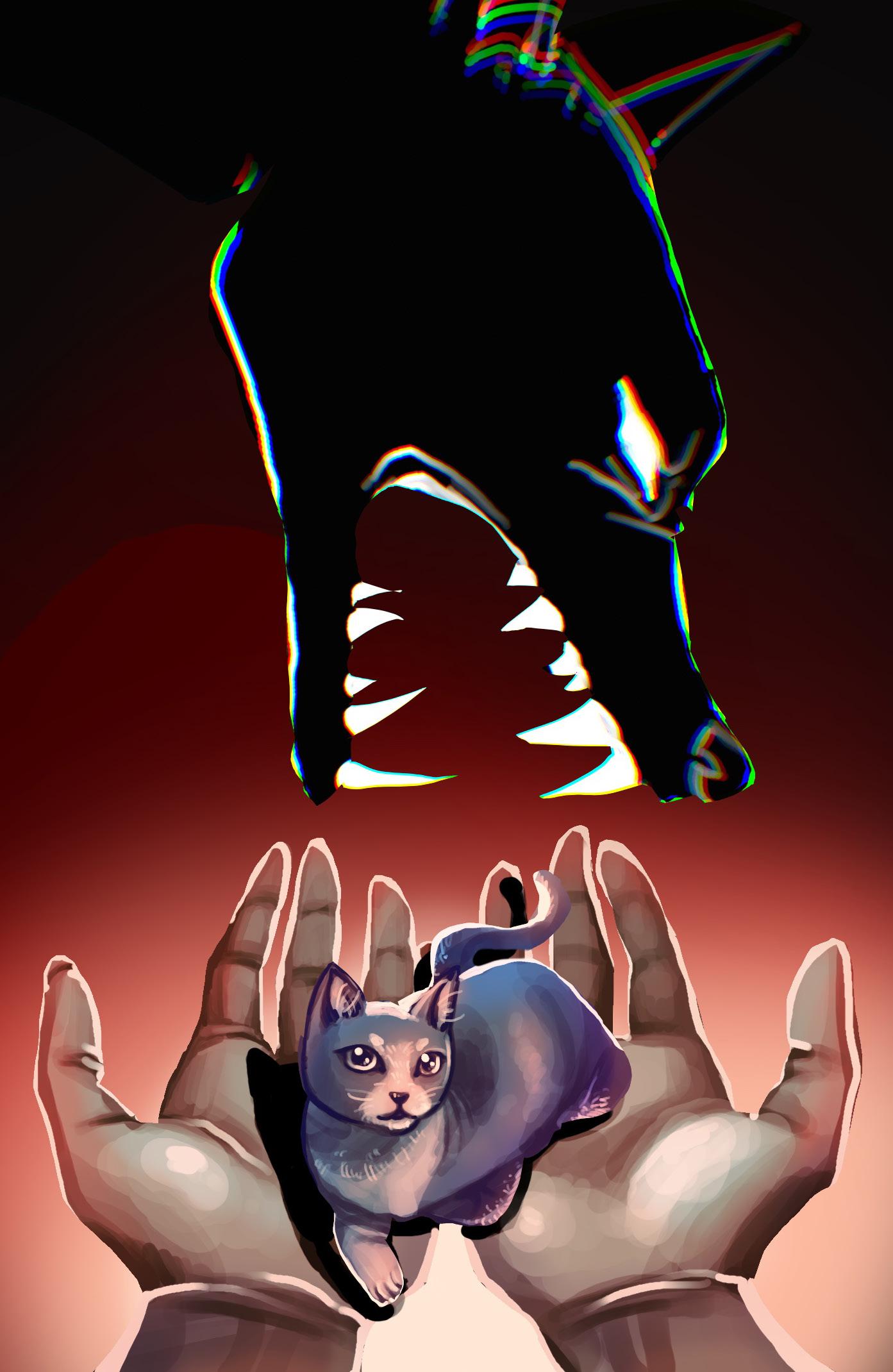
Louis’s life was full of learning. He could go up but not always down. We retrieved him once from the soaring redwood tree and twice from the slippery slant of our roof. After that, when he’d poke up at higher ground, we’d go ch! and clap at him like thunder cracks to remind him what altitude felt like. He would dart away. Anxiety sliced me when one day he crossed the street, and from the doorstep I watched cars whiz in front of him. Another time, pink cuts striped his face when he emerged from the hedge. I couldn’t see what shadowy things slinked behind the leaves, and my heart thumped. But he was exploring; he would learn that it was dangerous out there.
You can only protect him so much, my dad would reason at my knotted face. You can’t teach him with words.
Watch me, I said, and smirked when Louis trotted up at the sound of his name.
After the day that I stopped having a cat named Louis, I would pierce the inside of my lip with my teeth when I stepped outside. I would balance my sight above a tripwire; there was a stain on the pavement. Straight ahead, the dustpurple mountains walled off the lower part of the sky and walled in the huddle of houses whose flat
In the mirror, I catch a glimpse of myself, smudged eyeliner and messy hair. The curves of my torso are not curves that will ever go away. I will live the rest of my life in a state of asymmetry.
And yet. And yet at the end of it all, this body is what lets me sweat after a good run and cup my palms around a steaming cup of jasmine tea and wear pretty clothes and hold my friends’ hands. I’m pulling back my shoulders. I’m growing into these bones.
And I don’t know what my future home will look like, except for the fact that it will be messy. Well-worn couches to welcome in everyone I care about, and flowers spilling out of their pots, and picture frames piled upon every shelf. Soft yellow lamps, laughter, and warm hands. A mirror or two.
lawns opened into the road. Slipping through the mountains’ folds were furred haunches and paws that treaded soundlessly. Ears that twitched at a twig or a sniff. Hot strings of saliva, stretched between needle-sharp teeth. I could not look at the mountains.
People say trite things like cats have nine lives; I learned not to say coyote. I learned that hate works best when it’s sheltered behind your closed lips, simmering in your throat and shielded from placations.
I learned that when other people said coyote, it was an incantation. It wrapped around my heart and squeezed it into a rock.
Back when Louis was around to nudge his nose under my palm, I held an unequivocal respect for living things, and that meant I understood that some things killed, and that others just died, and that was that. Life was beautiful; life was simple. Things were alive until they weren’t. Rats drowned in the pool, and roadkill, though I gagged at it, happened, and people’s grandparents passed. Neighborhood pets stared out from papers taped to lamp posts. Their owners must not have trained their pets like we trained Louis, I reflected.
I understood enough about predators. They consumed small lives to sustain their own, bigger ones. Hawks made lazy smiles in the sky—a flick of movement below and they would jackknife down. Predation was rich. When coyotes streaked down dark sidewalks, I tingled at the whisper of the wind in their wake, the buzz of untamed life. And Louis, lively and precious, gnashed mice into pulp, deposited dismembered paws on doormats, flung lolling birds into the air to watch them fly by his command. He was a predator; he took lives. I loved my little predator.
But then I no longer understood a thing about predators.
After the day I stopped having a cat named Louis, the word I couldn’t say began to glow from two points in the dark all the time. It really did. Its wails would peal through my window. Clean sliding notes that pitched over into screeches. I wanted to snuff out the sound. I wanted to know where it came from and snuff it right out.
Out there in eucalyptus copses, they were pinning furred things onto cool dirt and tearing up strips of wet meat. They were huffing and swinging their heads left and right. Little ones bumped each other away from glistening morsels and then wobbled back into the fray. Their mother macerated more meat and let it fall from her tongue. She pushed her snout between her young: Take your turn, she said.
When Louis inched out from beneath the bed the evening our home became his home, he
entrusted us with certain essential things. His sustenance. His territory. His health, his play, his safety. He had not known wildness before, crouched in the cold and gray of the shelter, but the house on Lynnhaven Lane brought him to the wild’s frontier.
So it was proof of his faith in his new wardens that he stayed with them—with us. We let him outside to roam our backyard, whose fence’s gaps let him into our front yard, and neighbors’ yards, and yards and roads and mountains beyond, should he please. And he tested exploration— that was how he found himself 40 feet above our upturned heads and stuffed into a pillowcase by a fireman. He tasted adventure and risk. Sometimes, he’d be gone for a full day, and I’d think the brisk air and terrain rich with prey and play had won him over.
But we provided, and that was enough. The bowl of food, refilled always to excess, anchored him to us and our radius. We supplied him with the ingredients for dependency, and they were sweet and constant. With Louis, we had a contract.
We violated our end of the contract. My parents seemed unshaken by this breach. Or unsurprised, at least. Contractors had ripped them off before; they’d lost money and time and sustained cortisol spikes. But I wasn’t jaded by the system yet. I had a pure, crystal view of it. It was
like this: we had promised him safety, then we’d stripped him of his defenses when we fattened him and buckled a jangling, clanging necklace around his throat. So people would find him if he got lost, we said. How ironic. He never got lost except for when the collar ratted him out, and then he was lost forever.
I heard some stories in high school about little white dogs with crusty eyes whose yips faded into the distance. Carried off by coyotes—that was the speculation. I didn’t feel much sympathy. What do you expect? Your pet was bred to be docile. Stick it at the crook of the San Gabriel Mountains, and you’ve made a sacrificial lamb of a toy poodle. I had not applied the same logic to Louis, but he was domesticated all the same. I, his protectress, had cultivated his reliance with a tender, unrelenting hand, and then proffered him to the mountains’ silent lurkers.
So I learned that I was the predator, by proxy. The fog around the incantation began to dissipate—around what it invoked. Coyote had done as coyotes do.
And Louis had done as cats do, when they get the chance. He gamboled in the grass. He batted flies and chirped at squirrels on the telephone line and ran circles under flitting finches. He melted into a puddle under the sun. He lapped water from the pool and rubbed himself hard against
the lemon tree’s trunk; the scratches were good and rough. He sprang from behind the cover of the lilac bush at rabbits that sprinted away.
It’s just that the wilderness, even within the square footage of the house on Lynnhaven Lane, never only belonged to Louis. No matter how badly I wanted or needed that to be true.
Coyotes and people are not all that different. We both like community, but we’ll make do on our own. We both nuzzle our heads into others’ necks to show affection. Humans proliferated across North America with speed and resilience, unflappable in the face of steep mountain ranges and disease. Coyotes did the same. We both have preferred climes, but are willing to acclimate to less desirable landscapes if, for one reason or another, that’s where we end up. We both get hit by cars. We both relish summer berries.
One day, I forgot to make my eyes unseeing when I stepped out the door. I saw the stretch of pavement, and there was only the faintest shadow of a stain. The sun was a gold medallion in the sky. A squirrel darted up into a flutter of jacaranda blooms. I thought about how Louis, if he were there, would have swished his tail and followed the squirrel’s path through the branches with perfect focus.
Eventually, I wanted to forgive. I wanted to say coyote. They were my neighbors, after all.
it gets better; trust me the realest coming-of-age movie for our generation
Ozzy Wagenseil
by
Illustrated by Coco Zhu
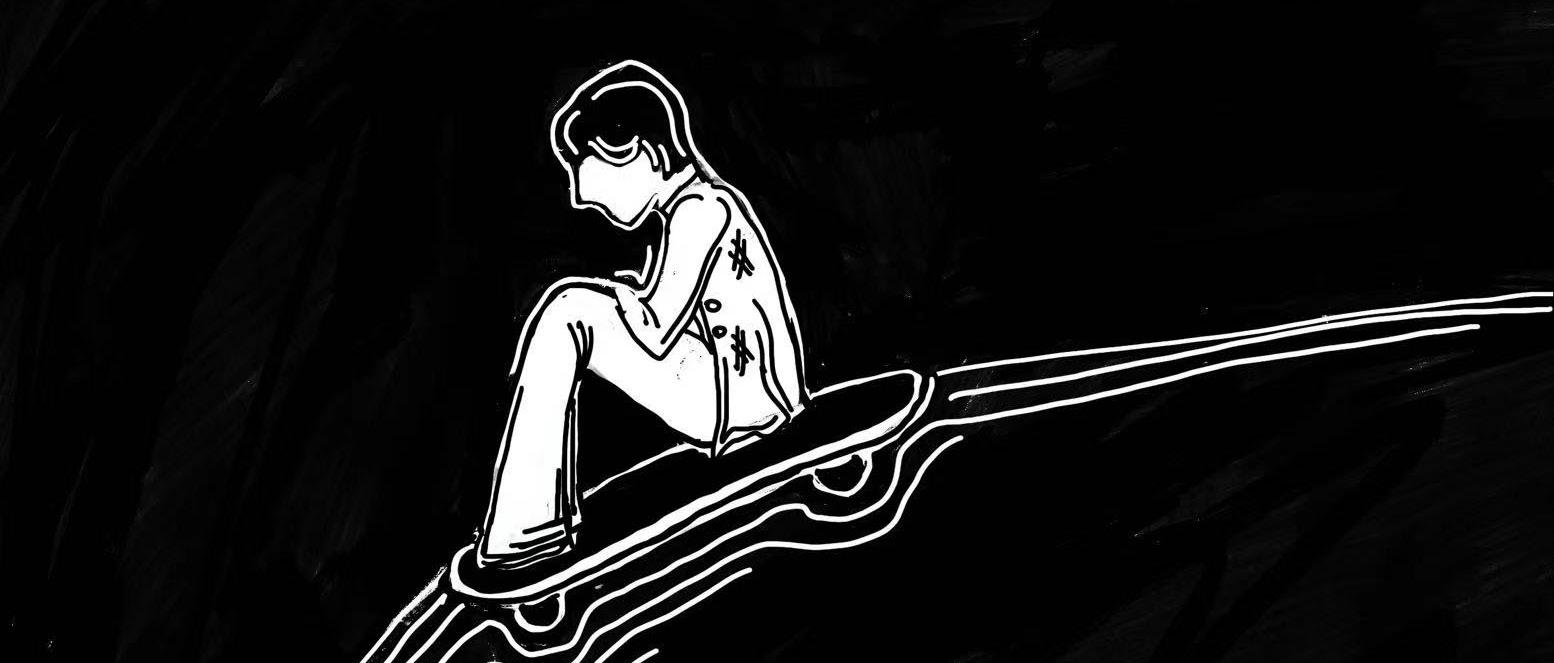
Act I, Scene 1.
The moon flickers adulterous, pretending to love me and the ghosts I embrace for naught. It’s a serene Thursday night; I hide us from our reflections on tear-stained windows. The moon shines in her fleeting glory—the world moves on.
The ghosts are sugary-sweet in their deceit, and they hug me tighter than I hold the stuffed toy on my bed. We are a cocoon of comfort-disguised suffocation; I welcome the whirlpool if only to feel the wind flow free.
i am invisible shadows and thorn-torn roses shivering suns on horizons i can never find and parched ghosts living in my untrusting mind.
And yet: Hold on. 1, 2, 3, breathe.
Act I, Scene 2.
The moon shines on, the sky beautiful and bright, yet the radiance mocks me as I tremble inside. The ghosts, like tides, sway to the moon’s siren song as she promises light, and like a drunken sailor, I follow desperately. But the candle has been in the cake too long; the wax melts.
The ghosts entwine with my goosebumped
skin, even as the arms that hold me are strong.
My scars had faded in the Before, and I cry over illusory wounds, scab-picked. No one should—they shouldn’t—see me like this. I smile for my audience: for the furrowed brows and shush, I got you. but i am chai spills and an unflinching dread of mirrors
ghosts whisper scorching sonnets in my ear and making eye contact with love is my biggest fear.
And yet: “Hold on,” my friend whispers. 1, 2, 3, breathe.
Act II, Scene 1.
The ghosts follow me like the pining crescent moon chases the planets that spurned her devotion. I see you, she reassures them, but she sparkles with the weight of our shared false hope. Perhaps we aren’t enemies, but hostages to a stifling centripetal force, trying to hold on to an inconstant illumination.
Far away, I hear my mother. The line is scratchy, her voice muffled by my thoughts. She calls my name as I clutch onto sound and warmth. I try not to feel like a skipping stone that drowns.
The ghosts loosen their hold.
i am sugar-char and tarnished silver rings i try my best to believe in people’s good and if trust could bid farewell to the ghosts, it would.
And yet: “Hold on,” the voices urge. 1, 2, 3, breathe.
Act III, Scene 1.
The wisps obscuring the moon recede, her enchanting siren song fading into a soothing lullaby. The thrashing ghosts enveloping my mind are reluctant, but the sounds of serenity push them away. A new minuet reminds me of my mother, friend, steady pulse, and love.
Fairy lights, family photos, and unadulterated moonlight seep into my labyrinth, and the dizzying world—spinning on its axis—slows to a stop. Invisible nymphs threatening to spill caramelsweet hope stop in their tracks. The world moves, but I move with it.
i am a colorful, cacophonic symphony and past hurts, when triggered, seduce my mind the ghosts may reappear but for now they’re left behind.
I cling to hope. 1, 2, 3, breathe.
Ikigai, wabi-sabi, shinrinyoku (forest bathing), and more
by Ellie Kang
Illustrated by Koji Hellman
Instagram: @eepykeepy
“It’s all about a larger journey: Your work is never done,” Erin Niimi Longhurst writes in her book, A Little Book of Japanese Contentments That's the beauty in it. The journey is the process and importance of discovering what keeps you going. It’s about learning to “let go of the things you can’t control.” Learning to “find balance, take breaks, savor the silence.” Learning to find clarity, regroup, and persevere through challenges. Learning to find and record the things that had made you feel happy during a time that seemed hard. Here are some methods Niimi Longhurst suggests:
Finding your ikigai
Embracing wabi-sabi and kintsugi
Understanding yourself through the body
Shinrin-yoku: nourishing through nature
Ocha and chado: wa, kei, sei, jaku
Calligraphy: ideas of practice, resilience, striving to achieve perfection
The Japanese home: transformative spaces
Discovering your ikigai, or purpose, is essential to the longevity associated with Japanese lives. It is one of the central ideals that contributes to living a happy and content life. It’s about discovering the fire within us— that for some may be burning bright, but for others, could take a quieter form. Finding your ikigai is a long process that is slowly revealed to you through moments of understanding yourself. Ikigai is the fuel for your motor, but not the destination. There is a proverb in Japan and China that can be used to understand the process of finding your ikigai: “If you try, you may succeed. If you don’t try, you will not succeed.” Finding your ikigai helps you establish clarity, allowing you to focus on the more important aspects of your life. It tells you it’s time to let go.
Wabi-sabi is something that I have encountered a lot, having based my IB art exhibition around it. It generally summarizes the beauty of imperfection and impermanence. It means accepting the natural aging process, “being able to recognize, remember, and find happiness in the moments that have passed.” It’s about the transience of life, and valuing what we already have. In understanding wabisabi, you learn to be grateful for everything you have, reflecting every day. As a result, you almost develop a skill of not being afraid of death. Even if death comes, you will appreciate everything you have received. Niimi Longhurst also discusses the concept of Mono No Aware—“The Bittersweet Nature of Being”—pointing out an
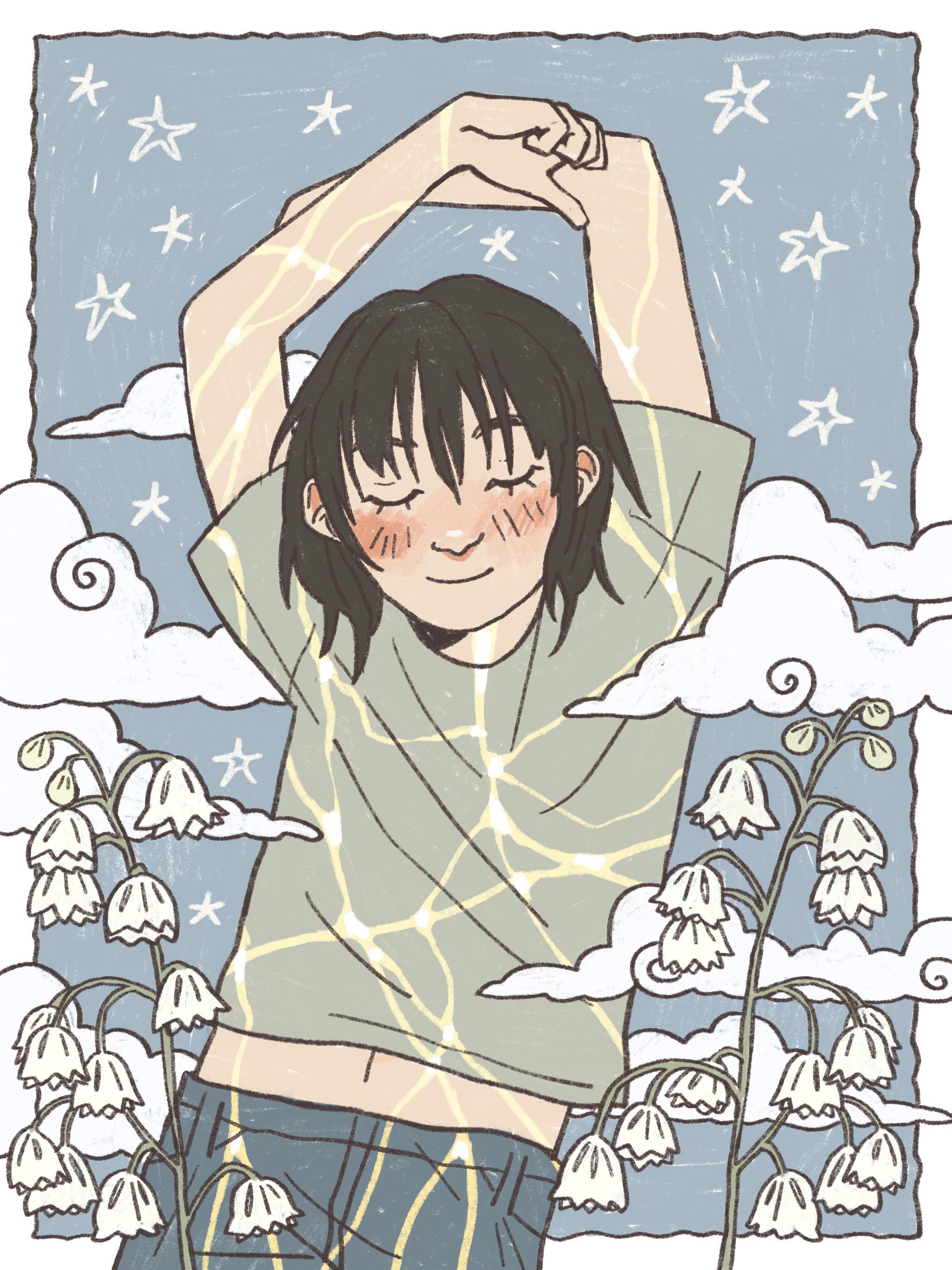
example that resonated deeply with me: at one point in your childhood, your parents decided to pick you up or lift you onto their shoulders for the last time. It’s the reflection and observance of the world around you. It’s the appreciation and understanding of the nostalgic happiness (natsukashii) that comes with moments you have experienced. You find comfort in the ideas of imperfection and impermanence and learn to be more forgiving with yourself.
Kintsugi, the art of repairing broken pottery with golden lacquer, highlights this point of embracing the beauty of imperfection. In this case, disfigurement or defect makes it even more beautiful. Niimi Longhurst writes, “Nothing is ever truly broken, no matter how painful it might seem at the time.” By applying this philosophy to life, you will hopefully realize that you are strong in your own way. You can never be beaten down. If a crack or tear appears in your life, acknowledge the disappointment, sorrow, loss, and feel what you are feeling—then repair it using golden lacquer. Highlight it and come out even more beautiful.
Apart from understanding through the kokoro (heart and mind), it can be easier to experience these philosophies through the karada (the body). The first of such experiences is shinrin-yoku (forest bathing), the process of being healed by nature. By taking a long walk through the winding forest, you can practice mindfulness and use this time as an escape to seek clarity, not avoidance. Lacking a fixed destination does not equate to a lack of
purpose. It is about “getting you somewhere in your mind, rather than your body.” The author also lists out absolutely beautiful words that encompass the natural phenomena that might be seen on the journey. These include komorebi, the kind of light you see in a forest where the rays of sun are filtered through the leaves of the trees, and kawaakari, the way moonlight reflects off a river and brightens it. In both ways, it elucidates the vitality of light against a still, calm backdrop of the forest or the waters, representing an ephemeral sense of beauty associated with the passing of time. Forest bathing can help clear your mind, rediscover your ground, and find greater content in the small things as you reconnect with the natural forces of life.
Ocha (green tea) and the tea ceremony is also something that I heavily explored in my art exhibition. The chado (tea ceremony) serves as a way of centering oneself, exercising the principles of tea founded by tea master Sen no Rikyū. The four principles: Wa (harmony), Kei (respect), Sei (purity), and Jaku (tranquility), are things that we should strive to achieve in our everyday lives. As the author puts it, “As human beings, we want to live peacefully with others and to be respected.” The process of the tea ceremony, which involves high degrees of all the principles, builds a sense of community and solidarity, and of finding the balance in between. The mundane daily action of having a hot cup of tea cleanses the mind, body, and soul, as you become focused on your ikigai
Calligraphy in Japanese and Chinese culture represents the beauty of maneuvering ink, elucidating a tension between the paper and the brush. In this sense, you learn the unforgivingness of the paper, the beauty in permanently capturing this fleeting moment. Calligraphy highlights the ideas of practice, resilience, diligence, and discipline in striving to achieve perfection through repetition. It develops a strong sense of connection with oneself, especially in the digital age.
Finally, the Japanese home is most memorable as a transformative space. Maximizing space with multifunctional rooms, you understand the fluidity and flexibility that allows this space to become home. The design is focused on withering, rustling, and aging. Once again, it’s intended to reflect that idea of the passage of time.
Thus, putting these ideas of both the mind and body into practice is about striving for a constant pursuit of self-improvement, accepting and facing
the obstacles that arise, and truly learning to let go of the things you can’t control. Remember that you are always in competition…with yourself.
“Find balance, take breaks, savor the silence. Get started.
Embrace the scrapes, scars, and bruises you’ll get from trying.
Fall down seven times, stand up eight. And keep going.”
– Erin Niimi Longhurst, A Little Book of Japanese Contentments

My mother likes to bring up that I used to be a heavy sleeper—a good sleeper—when I was young.
“All of your bad habits started forming during middle school,” she scolds me.
While I don’t reply, letting her continue with the childhood stories, a part of me still remembers. I think back to elementary school and the first few years of middle school. Though scarce in details, I remember that after a long day outside on the swings or playing four square with friends, when my head hit the pillow at night, I would fall asleep within minutes, even faster if I had eaten a heavy meal just an hour ago.
Yet, starting at the beginning of high school, my time spent in bed grew longer while my ability to fall asleep weakened. Time began stretching, yawning awake, to over 30 minutes. The more I forced myself to close my eyes, to slow down my breathing, and to remain nestled within the layered covers, the more redundant my motions felt. My body began to rebel even against myself.
I started to blame my surrounding conditions—the occasional rumbling of cars in my suburban neighborhood, my brother rustling around the bathroom at night, even the implications that it was time to rest irritated me, not being able to gain autonomy over my own time.
My mother likes to tell the same story about how I used to be a heavy sleeper:
One time, close to midnight, she heard a large thump sound from my room. Panicking, she ran across the hall and opened the bedroom door. Seeing that I was missing from bed, she rushed further in. Scurrying to the side, my mother found me asleep on the carpeted floor, my head inches away from
the trash can. The bedroom remained eerily silent, except for my rhythmic snores. I had fallen off the bed, failing to wake up even from the four-inch drop. Looking back now, I’m not sure how accurate the details are, whether they were exaggerated in contrast to the light sleeper I’ve become.
It seems that no matter how tired I am at night, as my eyes drift between open and closed, as I turn off the light, turn on some light music for sleep, and slip on my eye mask to block out any light, I instantly become nocturnal.
My concentration sharpens, ears becoming more sensitive to sound. Instead of the warm, cozy feeling from before, my sheets suddenly feel heavy, tightening around my legs. My face, resting comfortably against a pillow, now feels overwhelmingly stuffy.
For all the preparation I do each night, my attempts to train myself to sleep, there is nothing but waiting time, and I am left awake with the lingering thoughts of the day.
I’ve tried more than one strategy over the years. In high school, right before bed, I would alternate between drinking two steaming hot cups of whole milk and running at full speed on the treadmill. From there, I would quickly run up the stairs back to my bedroom, hoping that my body would take in the sudden tiredness and fall into immediate sleep. Yet, the attempts had a counter-effect, instead leading me to run to the restroom for a shower.
I resorted to listening to music while trying to fall asleep, trying out lullabies for newborns, melancholy mixes, light jazz for fast sleep, white noise, brown noise. Unexpectedly, I found myself drawn most
to podcasts—the sound of human noise and interaction brought me comfort. Listening to both familiar and new conversation topics, loud and quick exchanges between the hosts seemed to redirect my restlessness, allowing my heart rate to slow, and for my eyes to fall closed. While the voices continued running along my ears, the conversations fading in and out, my eyes came to rest, my mouth slightly open, a little drool forming. As I tuned in to the lively banter, the podcast in turn tuned out the other noises around me— dialing in and out, in and out.
I think I had it all wrong. Perhaps what I need the most at night isn’t silence, but an acceptance—an embrace—of the sounds around me. I used to blame the clamors happening outside in the hallways of the dorm or the flashing lights circling outside, where not even the eye mask blocked out the distractions.
While my roommate and I have distinct sleeping schedules, I find that when I move to sleep, going through the motions as usual, she, too, turns off the lamp. Her slow breathing, her very presence calms me down, balancing out my own churning thoughts. I listen to her tiny pencil scrawl across her journal. She moves lightly—a dainty, caressing dance around the room. The thought alone of knowing she’s feet away, sharing the space in the dimly lit room, is what eventually brings me to sleep.
Each day, I’m learning to embrace the noise. My prior refusal to accept the natural noises around me—the murmured voices, music playing in the bathroom, the last few words I hear before I fall asleep—now work in unity. Keeping these reminders in mind, hopefully, each night gets easier, each sleep gets heavier.
on ai, bananas, and the quiet places where creativity still lives by
Susanne Kowalska | Illustrated by Ruby Nemeroff
What is creativity?
We think we know. Then someone tapes a banana to a wall and calls it art. Or a computer paints a dream that could hang beside a Monet. Suddenly, definitions start to slip.
In 2019, Maurizio Cattelan did exactly that. He taped a banana to the wall and called it “Comedian.” It sold for $120,000. Crowds came. Some laughed. One man ate the banana. The gallery calmly taped up another. “The banana is the idea,” the director said, like someone explaining the joke after the punchline.
It wasn’t about fruit. It was about friction— between object and observer, meaning and absurdity. One collector even compared it to Warhol’s Soup Cans, not because of the subject, but because of how long we stared at it as if it mattered.
It wasn’t beautiful, nor did it have anything technically complex. But it had a pulse. At first, I thought the artist was just lazy. Still, I could feel someone behind the work, poking fun at the very idea of art with something so simple yet somehow so controversial.
Maybe creativity isn’t about what’s made. Maybe it’s about why. That electric urge to reach across the gap and make someone feel something—confusion, discomfort, wonder, delight. We know it when it hits. Or when it doesn’t. Personally, it hits when I feel the artist’s intent and find myself suspended in their world, trying to understand something I wasn’t meant to until that moment.
Now AI steps in. Not to ruin art, but to reflect it back. Algorithms can draw, compose, imitate. And they’re good. So good that, in certain studies, people can't reliably tell which art is human and which is machine. Our guesses are as random as coin flips.
But once we know what’s human, we prefer it. Not for how it looks, but how it feels. A researcher put it simply: we expect art to give off something human. Machines don’t have that to give.
Cory Doctorow calls AI art eerie—“the seeming of intent, without any intender.” It looks
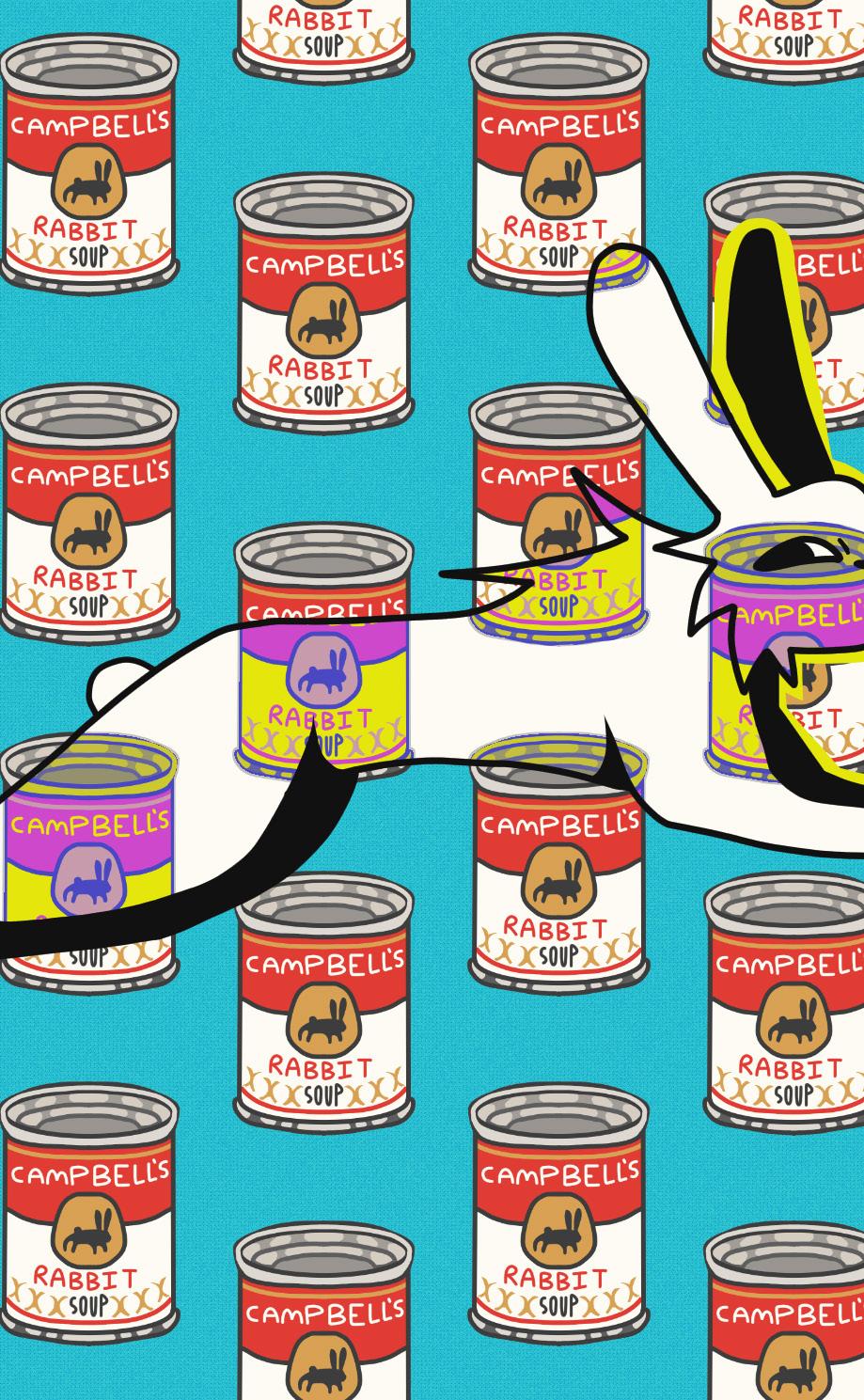
like someone cared. But no one did. There’s no joke tucked under the paint. No memory. No mischief. Just a mirror that blinks when you do.
Long before AI, Tolstoy and Dewey had already figured this out. Tolstoy said art is about feeling. Without that, it’s just wallpaper. Dewey called art a way to express and invite others in, a secret handshake between minds.
Creativity isn’t just about making something new. It’s about making something new that also surprises us and makes us feel like it matters.
Margaret Boden says creative work must be new, surprising, and valuable. AI can do the first two. It can generate things that are unfamiliar or unexpected. But value is trickier. That comes from intent, context, and guts. That’s why a human taping a banana to a wall can feel more daring than a machine remixing a hundred styles. Machines remix. Humans revolt.
Maybe that’s the spark. Not just novelty, but nerve. A banana taped to a wall isn’t clever because of what it is. It’s clever because someone dared us to call it nothing. And we couldn’t.
Creativity doesn’t come from perfection. It grows from mess. From risk. Perfectionism kills it by shrinking risk and flexibility. Fear of mistakes holds people back. Openness and empathy allow ideas to flow. People who are afraid to be wrong make fewer new things. People who are willing to be wrong? They surprise us.
Maybe creativity lives in that in-between. In the mess. In the moment before the brush hits the canvas. The banana may make us laugh. The AI may hold our gaze. But only one feels like someone’s still there, thinking with us.
Creativity might not be a product at all. It might be the silence between two minds, the glance, the joke only half-told. The shiver that says someone else stood here. Thinking. Feeling. Trying. When I see a painting, I don’t just see the image. I see the hours behind it. The strain, the frustration, the effort to make it mean something.
That’s what reaches me.
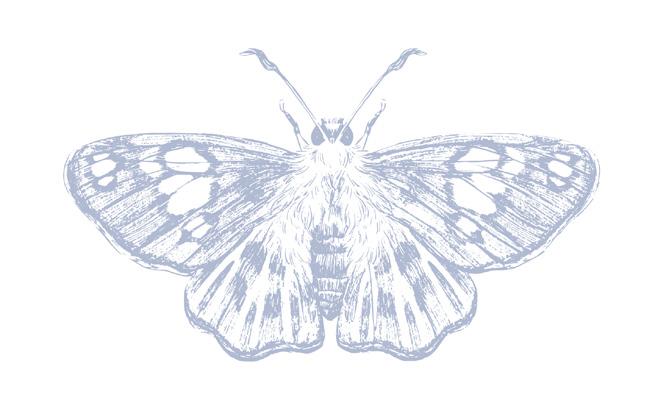
As long as we’re still asking what creativity means, we haven’t lost it. As long as we’re still taping bananas to walls, the ghost is still with us.
post- mini crossword
by lily Coffman
4 1
4 Across
How one could describe the college basketball of 1-Down
Official term for the "hat" on the 6 key 6 Arrangement, such as the seeding of basketball teams
7 Something to guess about the NCAA Championship game
8 One more than the amount of times that Brown's basketball team has competed in the NCAA
“Because a secret is meant to be shared. Once it is shared it is no longer a secret, but something slightly different, something slightly better. It is the nakedness before skinny dipping. It is connective tissue. It is an invitation. It is telling someone, I want to know you, and I want to be known by you.”
— Emily Tom, “Secrets” 04.14.23


“Perhaps it is because the people who are leaving are the people who make Rhode Island feel like a home for me. Maybe the root of my envy is fear of the impending changes in my life as a result of their impending changes. Truthfully and selfishly, my next phase feels neither bright nor fresh without them here.”
— Samira Lakhiani, “Out of Bloom” 04.11.24 3 2 1 8 5 6 7
Down
With 1-Across, spring month during which the NCAA tournament begins 1
4 2 3 5
Great passion, as one may feel towards their college basketball team
John of tractor fame
Price to pay
Perennial plant with an elongated stem, or trunk, usually supporting branches and leaves
EDITOR-IN-CHIEF
Emilie Guan
FEATURE
Managing Editor
Klara Davidson-Schmich
Section Editors
Daphne Cao
Elaina Bayard
ARTS & CULTURE
Managing Editor
Elijah Puente
Section Editors
Lizzy Bazldjoo
AJ Wu
NARRATIVE
Managing Editor
Katheryne Gonzalez
Section Editors Gabi Yuan
Chelsea Long
LIFESTYLE
Managing Editor
Tabitha Lynn
Section Editors
Daniella Coyle
Hallel Abrams
Gerber
POST-POURRI
Managing Editor
Susanne Kowalska
Section Editor Olivia Stacey
HEAD ILLUSTRATORS
Junyue Ma
Kaitlyn Stanton
COPY CHIEF
Jessica Lee
Copy Editors
Indigo Mudhbary
Anika Kotapally
Lindsey Nguyen
SOCIAL MEDIA
Managing Editor
Tabitha Grandolfo
Section Editors
Eliot Geer
Chloe Ovbiagele
LAYOUT CHIEF
Gray Martens
Layout Designers
Amber Zhao
Alexa Gay
James Farrington
Irene Park
STAFF WRITERS
Nina Lidar
Gabi Yuan
Lynn Nguyen
Ben Herdeg
Daphne Cao
Indigo Mudbhary
Ishan Khurana
Sofie Zeruto
Sydney Pearson
Ayoola Fadahunsi
Samira Lakhiani
Ellyse Givens
CROSSWORD
AJ Wu
Ishan Khurana
Lily Coffman